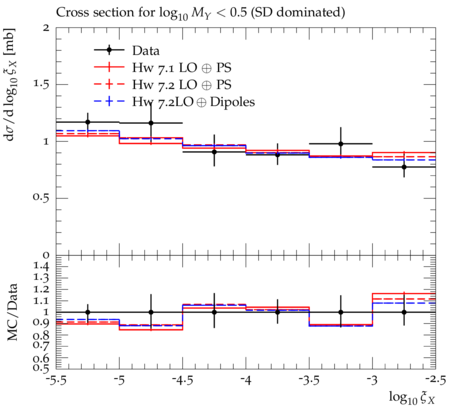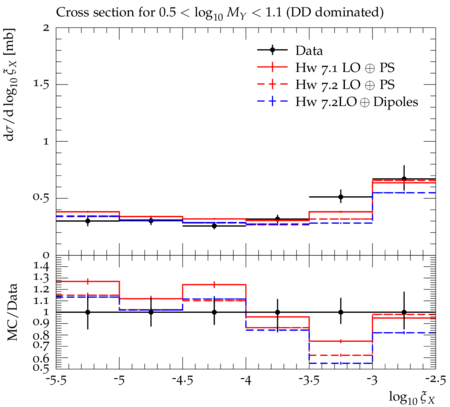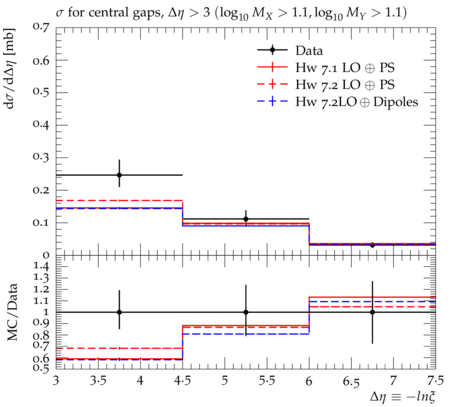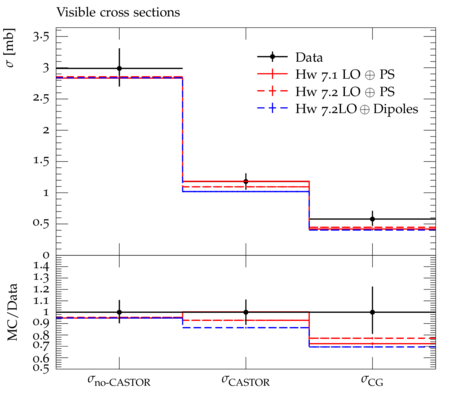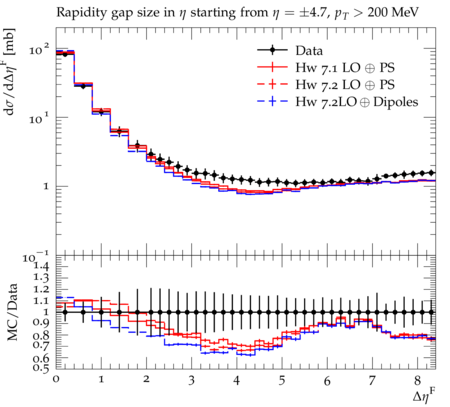CMS_2015_I1356998
Measurements of diffractive dissociation cross sections in pp collisions at √s=7 TeV are presented in kinematic regions defined by the masses MX and MY of the two final-state hadronic systems separated by the largest rapidity gap in the event. Differential cross sections are measured as a function of ξX=M2X/s in the region −5.5<log10ξX<−2.5, for log10MY<0.5, dominated by single dissociation (SD), and 0.5<log10MY<1.1, dominated by double dissociation (DD), where MX and MY are given in GeV. The inclusive pp cross section is also measured as a function of the width of the central pseudorapidity gap Δη for Δη>3, log10MX>1.1, and log10MY>1.1, a region dominated by DD. The cross sections integrated over these regions are used to extract the total SD and DD cross sections. In addition, the inclusive differential cross section, dσ/dΔηF, for events with a pseudorapidity gap adjacent to the edge of the detector, is measured over ΔηF = 8.4 units of pseudorapidity. The results are compared to those of other experiments and to theoretical predictions, and found compatible with slowly-rising diffractive cross sections as a function of center-of-mass energy.
Generated at Thursday, 12. December 2019 02:35PM
